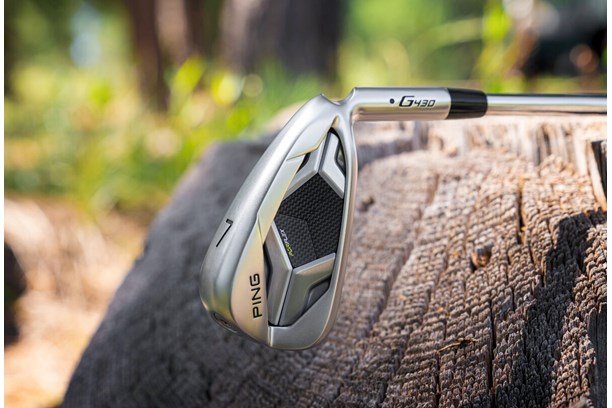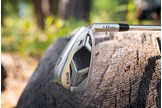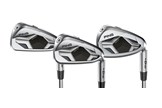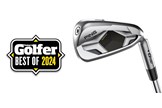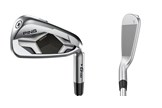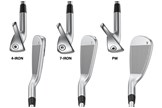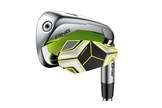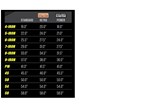Super forgiving and still worth the money in 2024? Ping G430 Iron Review
Last updated:
-
At a glance
- TG Rating
- Owner Rating
-
Pros
– Ping have made 'G' irons for nearly 20 years, you can buy into the franchise safe in the knowledge you're getting some of the best-performing Mid-Handicap irons available.
– Cosmetically the G430 is the best looking 'G' iron ever.
– There are a ton of fitting options, including a new High-Launch set-up.
-
Cons
– A slight strengthening in lofts will raise eyebrows, but our initial test data shows shot height remains high, just as Ping promised.
What we say...
The Ping G430 iron blends faster ball speeds with forgiveness to create a brilliant game-improving iron that’s perfect for mid-handicap golfers.
Evolution has very much been the story with Ping G irons since the original Ping G2 back in 2004, with the model receiving subtle tweaks to remain as one of the best golf irons available. Every new release has been ever so slightly better looking, more forgiving, and more powerful than the last. But rather than simply continue that trend, Ping started the development of the new G430 iron by asking themselves: ‘How do distance irons lead to better scoring?’
Thanks to Ping’s continual studies into golfers and their equipment, the brand knew 75% of the iron shots hit by mid-handicap golfers impact low on the clubface. It makes perfect sense then to make lowering the new G430’s center of gravity a priority, along with optimizing the face’s variable thickness to reflect low-face impacts.
Ping’s previous G425 iron was one of the best golf irons of the last two years, yet incredibly the brand are claiming a 7-10 yard carry distance gain across the whole new G430 set, which they say makes them “distance competitive but scoring uncompromised”. We feel the Ping G430 is one of the best mid-handicap irons you can get.
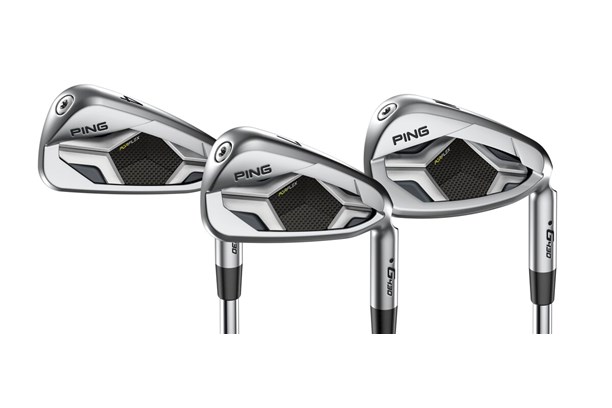
Everything you need to know about the Ping G430 iron
Thin and fast face
Thanks to a new heat treatment, the G430’s 17-4 Hyper stainless-steel face is 3% thinner. The brand say the thinner face, along with fractionally stronger lofts (29° 7-iron vs 30° in the G425 iron), deliver 2+ mph faster ball speeds.
Thanks to the new lower CG, the brand also reckon golfers can expect greater maximum shot height, so there will be no difficulty stopping shots on the dancefloor.
By dropping the center of gravity down (it’s 0.050” lower throughout the set), golfers get better feel and more speed, without needing to change their impact location. In short, Ping have brought the sweetspot to you.
More compact look
The ‘G’ marquee is the best Ping iron in terms of numbers sold since the model was first introduced in 2004. Over the last two generations talk has turned to the ‘G’ becoming slightly more compact and desirable (particularly in the scoring irons), but doing so with zero trade-offs in terms of performance.
This time around, thanks to a shorter hosel, Ping’s engineers reckon golfers get a slightly more compact cosmetic without touching the forgiveness on offer.
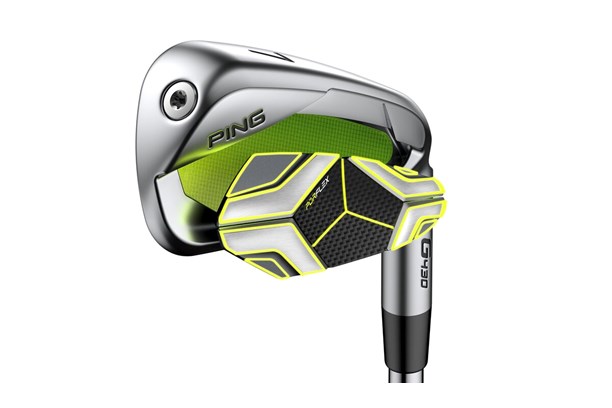
Badge of honour
Avid equipment fans will have spotted over the last few years how brands are moving away from traditional cavity badges in irons. Ping say they’re doing this because badges restrict face flex at impact. But where others have turned to hollow body and cap back constructions, Ping’s dedication to engineering brilliance has led them to create a badge that flexes.
The new PURFLEX badge in the G430’s cavity back is made up of 15 different pieces and it’s got 7 flexible zones. Ping say the combination of an aluminum chassis, carbon fiber sections, 7 ABS molded pieces and a damping tape backer, improve feel and sound, encourage additional face flex and help reduce spin (which adds distance, but doesn’t affect stopping power thanks to a higher shot height).
Lower MOI but better dispersion
Golfers for years have been told how MOI equals forgiveness, but Ping are happy to decrease the MOI of the G430 iron fractionally (from 3,360g cm2 to 3,196g cm2), safe in the knowledge that thanks to being lower spinning the model will offer golfers a 23% lower dispersion than the previous G425. It means the G430 will still be one of the most forgiving irons on the market.
More bounce
‘G’ irons have always been about playability, and by adding 1° more bounce to the soles of the G430 golfers get extra insurance against hitting destructive heavy and fat shots.
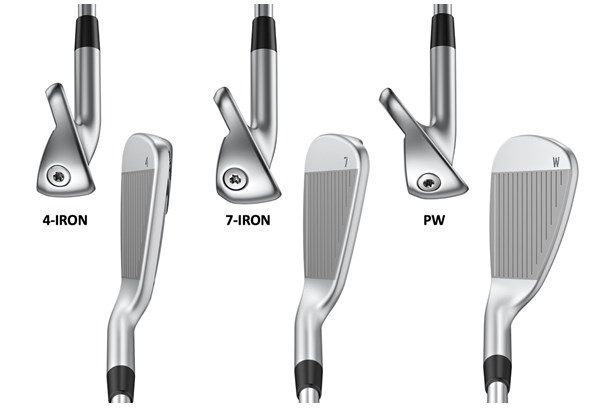
There’s a new High Launch set-up for moderate-speed players
It would be really easy to look at Ping strengthening the lofts of the G430 and say the model is no longer an iron for moderate-speed players, but that couldn’t be further from the truth. For the first time, Ping have developed a whole new High Launch set-up within the whole G430 family, and they reckon the model will account for 10-30% of ‘G’ iron sales going forward.
The new HL setup is approximately 15% lighter across the family, whether you’re buying a driver, fairway wood, hybrid or irons, and each comes with a swing weight to match slower swing speed players. A Fujikura-produced 35/45g Ping Alta Quick shaft has also been developed specifically for the HL’s target player. If you swing a 7-iron less than 75mph, the new Ping G430 are right up your street.
Video: Does the Ping G430 iron suit you?
Details: Ping G430 iron
RRP: £150 / $170 per iron (steel) / £160 / $185 per iron (graphite)
Stock shaft: Ping AWT 2.0 (s), Ping Alta CB Black (g)
No upcharge shafts: Dynamic Gold 105 (s), Project X 10 (s), Dynamic Gold 120 (s), Dynamic Gold (s), KBS Tour (s), Nippon NS Pro Modus3 105 (s), True Temper Elevate MPH (s, Ping Alta CB Slate (g), UST Recoil (g)
7-iron loft: 29°
Forgiveness rating: 3.5/5 (Mid-High Handicap Iron)
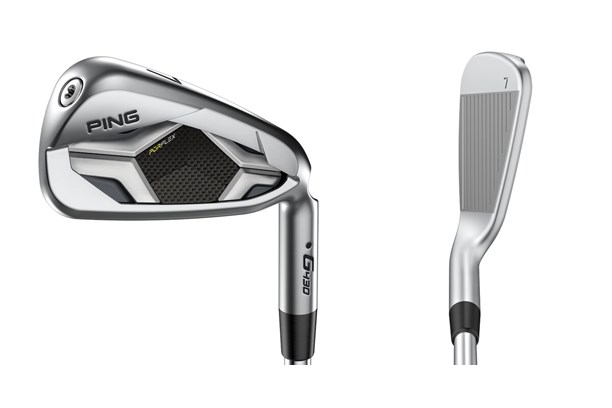
Specs: Ping G430 irons
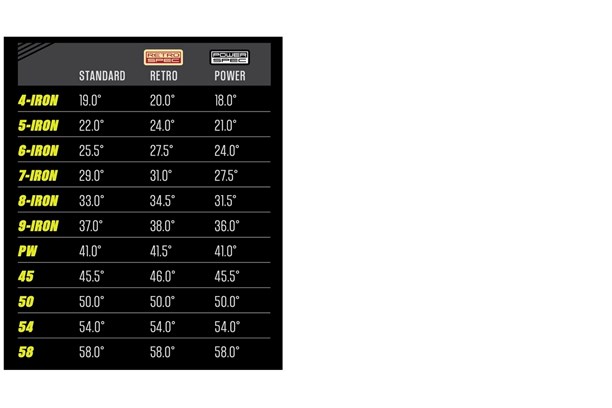
Distance gains
Ping have added up the distance gains that players of different swing speeds can expect to see by making a full-bag switch from G425 to G430. As you can see, the irons are a significant part of that, meaning G430 will be a very tempting option for anyone wanting some extra carry distance with their irons.
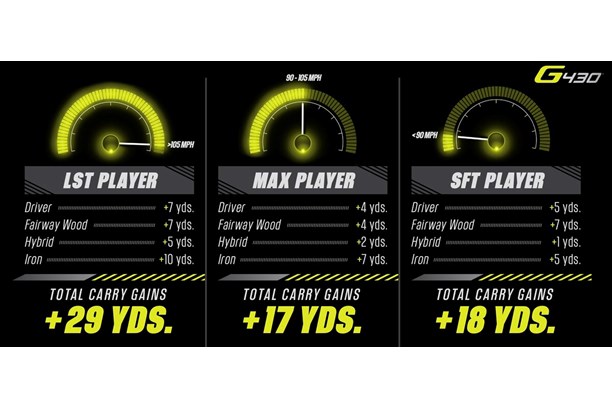
Verdict: Ping G430 iron
The G430, like their predecessors, are a force to be reckoned with even though they’re now entering their second year on the shelf. The G family have evolved into an attractive and desirable model (especially in the shorter irons and wedges), yet they remain ultra-forgiving, a point highlighted by the model posting the second smallest carry distance drop-off and second tightest shot area of our entire 2024 Mid-Handicap Iron category.
The G430 wasn’t our fastest or longest Mid-Handicap model but their numbers consistently hovered around the test averages for every metric except dispersion, where the model excelled. I’ve tested the G430 for a couple of years now, while some will say the blade lengths of the mid and longer irons are a little longer than some (which helps nudge up MOI forgiveness) I’d happily recommend them and spend my own money on a set, safe in the knowledge Ping irons hold their value better than almost any other golf equipment.
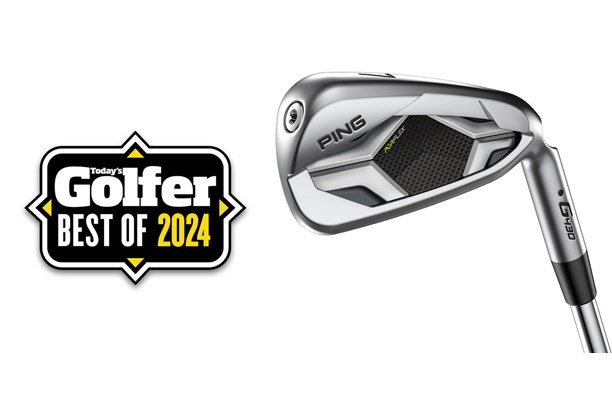
Just remember if you find the lofts are a fraction strong for your average swing speed, all Ping irons come with the option of Retro (weaker) and Power (stronger) lofts, and if you’re really struggling to flight shots for maximum carry distance there’s also a lighter and more lively HL version too.
If your game teeters at the edges of the Mid-Handicap Iron category it’s well worth noting there’s a new i530 Players Distance Iron and G730 Super Game Improvement on their way in April 2024.
Video: How does the Ping G430 compare to leading competitor 2024 Mid-Handicap Irons?
Data comparison: How does the Ping G430 compare to leading competitor Mid-Handicap Irons?
| Iron | 7-Iron Loft | Ball Speed | Launch Angle | Backspin | Height | Descent Angle | Carry Distance | Carry Distance Drop Off | Shot Area |
| TaylorMade Qi | 28° | 129.2 MPH (3) | 15.6° | 5065 RPM | 33 YDS | 44.2° | 198 YDS (T1) | 12 YDS | 267.6 SQ YDS |
| PXG 0211 XCOR2 | 28° | 130.1 MPH (2) | 13.6° | 5057 RPM | 29 YDS | 41.8° | 198 YDS (T1) | 16 YDS | 193.6 SQ YDS |
| Callaway Paradym Ai Smoke | 28° | 130.6 MPH (1) | 14.5° | 5311 RPM | 32 YDS | 43.4° | 197 YDS (3) | 18 YDS | 552.6 SQ YDS |
| Wilson Dynapower | 27° | 127.8 MPH | 15° | 4910 RPM | 31 YDS | 42.7° | 195 YDS | 8 YDS (T3) | 196.8 SQ YDS |
| Cobra Forged Tec X | 27° | 127.7 MPH | 13.9° | 4872 RPM | 29 YDS | 42.1° | 191 YDS | 9 YDS | 360 SQ YDS |
| PXG 0311 XP GEN6 | 27° | 126.2 MPH | 13.7° | 4726 RPM | 27 YDS | 40.8° | 190 YDS | 20 YDS | 470 SQ YDS |
| Mizuno JPX923 Hot Metal | 28.5° | 127.6 MPH | 14.9° | 5748 RPM | 31 YDS | 44.2° | 190 YDS | 13 YDS | 243.1 SQ YDS |
| Srixon ZX4 | 28.5° | 126.4 MPH | 14.7° | 5030 RPM | 30 YDS | 43.1° | 189 YDS | 22 YDS | 594 SQ YDS |
| Ram FXT | 126.1 MPH | 15.4° | 5395 RPM | 31 YDS | 43.7° | 189 YDS | 13 YDS | 161.2 SQ YDS | |
| Cleveland XL ZipCore | 29° | 125.1 MPH | 14.6° | 4719 RPM | 29 YDS | 41.8° | 188 YDS | 15 YDS | 210 SQ YDS |
| Ping G430 | 29° | 125.8 MPH | 14.9° | 5117 RPM | 30 YDS | 43.3° | 187 YDS | 7 YDS (2) | 110.6 SQ YDS (2) |
| Inesis 500 | 125.1 MPH | 15.6° | 5456 RPM | 31 YDS | 43.5° | 187 YDS | 8 YDS (T3) | 181.6 SQ YDS | |
| Titleist T350 | 29° | 125.5 MPH | 14.3° | 5159 RPM | 29 YDS | 42.6° | 186 YDS | 11 YDS | 167.2 SQ YDS |
| Cobra Darkspeed | 27° | 126.7 MPH | 12.4° | 5298 RPM | 26 YDS | 40.7° | 186 YDS | 8 YDS (T3) | 129.6 SQ YDS |
| Takomo 101 | 30° | 123.8 MPH | 14° | 4784 RPM | 27 YDS | 40.8° | 184 YDS | 4 YDS (1) | 52.4 SQ YDS (1) |
| Yonex GS i-Tech | 125.2 MPH | 13.8° | 5373 RPM | 28 YDS | 42.2° | 184 YDS | 21 YDS | 611.1 SQ YDS | |
| Vega Mizar Plus | 30° | 125.4 MPH | 14.3° | 5858 RPM | 29 YDS | 43.8° | 182 YDS | 22 YDS | 420.2 SQ YDS |
| Sub 70 699 | 31° | 124.1 MPH | 13.3° | 5847 RPM | 27 YDS | 42.1° | 179 YDS | 11 YDS | 154 SQ YDS |
| MacGregor V-Max | 118.3 MPH | 17.5° | 6305 RPM | 31 YDS | 45.3° | 171 YDS | 8 YDS (T8) | 121.6 SQ YDS (3) | |
| AVERAGE | 126.1 MPH | 14.5° | 5265 RPM | 29.5 YDS | 42.7° | 187.9 YDS | 12.9 YDS | 273.5 SQ YDS |
CEO & President, John K. Solheim on the Ping G430 irons
Our ability to make this iron so much longer while maintaining all the other important attributes golfers need from their irons like forgiveness, stopping power and gapping alternatives is one of the most impressive engineering stories throughout the entire G430 line.
We know golfers want more distance from their irons but distance without control doesn’t lead to lower scores. That’s why we put so much emphasis on designing an iron that not only goes a very long way, but it flies higher, straighter and lands softer.
READ NEXT
– Ping G430 hybrids review
– Which Ping iron suits you?
– Ping G430 driver review
Product Information
Ping G430 Irons
RRP: £150 / $170 per iron (steel) / £160 / $185 per iron (graphite) | VIEW UK OFFER | VIEW US OFFER
Stock shaft: Ping AWT 2.0 (s), Ping Alta CB Black (g)
No upcharge shafts: Dynamic Gold 105 (s), Project X 10 (s), Dynamic Gold 120 (s), Dynamic Gold (s), KBS Tour (s), Nippon NS Pro Modus3 105 (s), True Temper Elevate MPH (s, Ping Alta CB Slate (g), UST Recoil (g)
7-iron loft: 29°
Forgiveness rating: 3.5/5 (Mid-High Handicap Iron)
Visit the Ping website here
